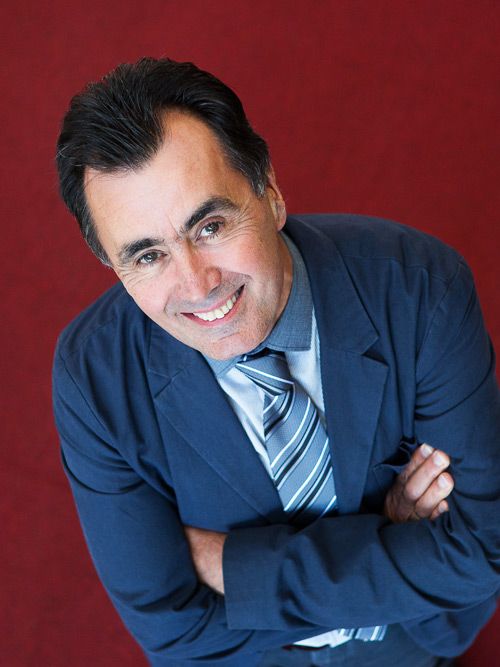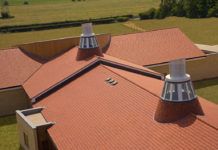

When Martin Oldridge retired from the executive committee of the Tile and Brick Europe (TBE) organisation in June 2015, it signalled the end of the long and illustrious career of one the UK’s leading industrialists from the clay and concrete roof industry.
Martin was the owner and chairman of Sandtoft Roof Tiles until 2008, when he sold a majority share of the company to Wienerberger. For many years Martin had been alone in representing the interests of the UK clay roof tile industry at the top table of TBE. He and his three brothers had taken on a small North Lincolnshire tile maker started by their father, and built it up to become the third largest roof tile manufacturer in the country.
TBE was founded in Zurich in 1952 to promote the interests of the clay brick and tile industry in Europe. When Martin first attended a TBE meeting in 1989, he found it was a bit like ‘an old boy’s club’ for the mainly private owners of Europe’s clay brick and tile manufacturing companies. He attended his first TBE Congress at a palazzo on the Grand Canal in Venice. Today, 26 years later, TBE is rather more professional and represents industry associations and companies from 21 European Union member states plus Norway, Russia and Switzerland, and is part of Cerame-Unie, the European Ceramic Industry Association. It provides a forum for its members to exchange information through specialist working groups of technical experts from national associations and companies on subjects such as technical development, sustainable construction, climate change, resource efficiency and other emerging issues. Importantly, TBE is well placed to represent the industry in Brussels, to make sure that the Commission is kept aware of its needs.
From an early age, Martin remembers the discussions around the family dinner table about tiles and tile factories. In his school holidays he would earn some pocket money punching nail holes into pantiles whilst the clay was still wet, earning one old penny per tile. In his university holidays he would join the bricklaying gang, putting up new factory buildings and sharing in the jokes about his father.
The family firm
He joined the family firm, Sandtoft Tileries, in 1966 and set about writing the company’s literature. Most of the photos in the new literature were his; sometimes he would get up before dawn to photograph a roof in the best light. He recalls: “When I first started, our literature consisted of just some single sheets with photos of the tiles with a list of their size, weight and covering capacity. And that was it! There was no mention of how to fix them. That sort of thing was for the fixers, not the manufacturers.”
This is in stark contrast to today’s roof tile manufacturers’ technical departments, who provide a complete range of services, including material quantity take-offs, calculated fixing specifications and full roof design specifications etc.
In the 1990s, Martin was one of the first in the construction products sector to recognise the potential of the internet to promote its products, with Sandtoft developing its fully functioning website ahead of any other roof tile manufacturers. For some years, if you asked your search engine for roof tiles, Sandtoft always came up at the top.
Concrete tile use takes hold
Unlike in most of mainland Europe where clay tiles are the predominant form of pitched roof covering, concrete roof tiles account for a large percentage of the pitched roofing in the UK. Concrete tile use really took hold after the Second World War, when a huge rehousing programme started. Clay tile producers had been slow to invest in modern technology, contrary to mainland Europe, so clay tiles were hard to obtain and were perceived as not only difficult to fix, but also in short supply and unreliable in use. Architects preferred to specify concrete because it was cheaper than clay, and the ease of laying concrete tiles compared with clay was a huge factor in their favour. Also, concrete tiles were more readily available. Automated concrete tile production had been largely invented in the UK, and the early producers, Marley and Redland, had invested heavily in new production lines. Martin’s father had observed this, and was alone amongst the small tile makers to join them in concrete tiles. For many years, Sandtoft survived on its concrete tile business.
In more recent times, as well as producing most of the country’s traditional clay overlapping pantiles, Sandtoft has been on its own in producing the more economical single lapped interlocking clay tiles in the UK. The company acquired its Broomfleet factory in 1979 and produced the Tudor, a large interlocking clay pantile. However, this was difficult to produce accurately and hard to install, so in 1984, it launched the County Pantile, the first modern mid-format clay interlocking clay pantile to be produced in the UK, which is still very popular today.
Championing clay use
Martin’s family not only championed clay use in the UK; they set about changing the status quo by investing in the sort of clay tile technology that had long been commonplace in Europe, where quality problems had largely been consigned to the past, and where – just as important – the price of clay more nearly matched the price of concrete. Sandtoft built the first Hydro-casing kiln in the UK, which was only the second in Europe, to produce single lapped clay tiles on a scale to rival concrete tile production.
However, his greatest achievement is undoubtedly the invention of the company’s ‘New Generation’ range of clay tiles. By this time, Martin’s son Simon was the managing director, aided by brother Nick and sister Kate. Together they realised that in order to get clay tiles accepted by the average roofing contractor, the tiles had to be as easy and quick to install as the equivalent large format concrete tiles. Up to this point, single lapped clay tiles varied in size and were generally ‘fixed gauge’, which caused difficulties in setting out the roof. In order to produce ‘open gauge’ tiles such as the now popular 20/20, Cassius and Olympus tiles, the company had to invest in the latest technology to enable the production of clay tiles that are every bit as accurate and stable in dimensional tolerances as concrete tiles. This has revolutionised the use of large format clay tiles in Britain, bringing the beauty of a natural material, combined with affordable installation costs, long-term durability and an appearance that will not diminish with time.
The establishment of Europe as a free trade area meant that European standards for products had to be written. Martin represented Britain from the very inception (more than 25 years ago) of the CEN committee set up to produce a European clay tile standard. He recalls how when he first attended, the discussions were conducted in three languages, one after another: French, German and English, with two full time translators. At one stage he enlisted the help of his wife, a fluent French speaker, to translate the French draft into English. Today, of course, the translators have all gone; everything is done in English; how times have changed! It made Martin realise how much influence Britain could exert in Europe if only it were to engage fully rather than standing back.
Construction skills shortage
Martin is particularly proud of having pushed hard to address the UK’s construction skills shortage by opening the Sandtoft Training and Assessment Centre. It had always been in the back of his mind that, when he entered the industry in the 1960s, apprenticeships in roof tiling were just disappearing, to his enormous regret. He had watched helplessly over the whole course of his career the virtual disappearance of training in the UK, whilst it continued to be given priority in most other European countries, notably Germany. He decided we had some serious lessons to learn from our competitors in Europe and Sandtoft became a registered NVQ assessor for both on site and centre-based assessments for NVQ levels 3 and 4.
It became part of his objective to develop Sandtoft to be up with the best in Europe, if not the world. He had seen what happened to the British tile industry in his father’s day, when the insular attitude of clay tile makers led most of them into bankruptcy. He realised it was necessary to be fully up to date with the latest processes, using the best equipment, and he visited a number of the principle tile production centres in Europe, making many friends in the process.
Having built up Sandtoft to be a major player in the UK pitched roofing market, Martin is enjoying his retirement in the south of France, doing a lot of cycling and oil painting, knowing he has left a lasting legacy in its products and services for Wienerberger to continue to build upon. He will however never lose his interest in tiles!



